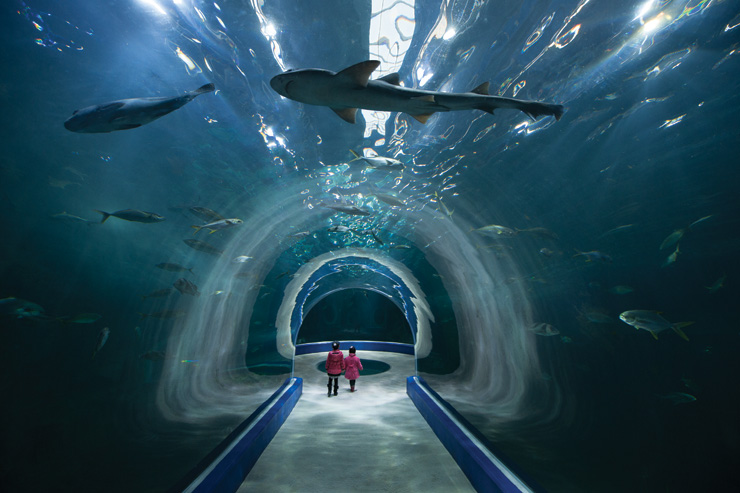Photojournalist Mark Edward Harris, a frequent KoreAm contributor, shares his impressions and images from his new book that reveals the beauty of South Korea’s off-the-beaten-path regions.
by MARK EDWARD HARRIS
photos by MARK EDWARD HARRIS
For more than a decade, projects in South Korea have focused my attention and my cameras on Seoul and the area along the DMZ. But South Korea is, of course, far more than just these two areas that generate the most international news.
When I had the opportunity to create South Korea (Shashin Press, to be released this month), a companion book to my new book on North Korea, the idea was to look at the entire peninsula 60 years after the signing of the armistice that stopped, but did not officially end, the Korean War. To capture images that more fully represented South Korea’s diverse regions, I knew I had to journey beyond the capital and explore the areas off the beaten path.
I discovered places like South Jeolla Province, in the southeastern part of the Korean Peninsula. The area is teeming with natural beauty: tea fields, bamboo forests, wetlands and 500 miles of dramatic coastline. Just off the coast are more than 300 islands, many of which are part of Korea’s national park system.
A man strolls past artwork along the seafront in Pohang.
Yeosu is the usual starting point for exploring South Jeolla Province. Because the city played host to the 2012 World Expo, a significant amount of investment was put into Yeosu’s tourism infrastructure. While many of the expo-specific installations are now just a memory, buildings such as the magnificent Aqua Planet Yeosu aquarium were designed for the long term. The aquarium’s 6,030-ton tank, the country’s largest, contains not only abundant sea life, but also hosts synchronized swimming performances throughout the day.
The Buddhist Dosoram Hermitage is perched on the west side of Dalmasan (Dharma Mountain) and is part of the Mihwangsa Buddhist temple, which was established in 749 A.D.
Much further off the beaten path is the Buddhist Dosoram Hermitage, perched on the west side of Mt. Dalma. It is part of the Mihwangsa Buddhist temple, which was established in 749 A.D., during the Silla Dynasty.
Along the coast, west of Yeosu, is the Suncheon Bay Ecological Park, the world’s fifth largest wetland, composed of a two-mile-long stream running through a 5,490-acre tideland and a 570-acre field of reeds, which is home to many species of plants that thrive in damp conditions. Among all of the world’s wetlands, Suncheon Bay is known for attracting the largest number of rare birds, including the hooded crane, the white-naped crane, the white stork, the black-faced spoonbill and the Eurasian Oystercatcher.
A photographer who specializes in taking pictures of visitors to the dramatic tea terraces in the Boseong green tea fields shows off his work.
The magnificent terraced Boseong Green Tea Plantation and nearby Bamboo Garden, the Seonamsa Temple and Naganeupseong Folk Village were all a photographer’s dream locations. Faraway in distance and pace from Seoul, exploring South Jeolla Province, I stepped back in time, albeit with state-of-the-art camera equipment, to experience natural beauty and ancient traditions.
I continued my “beyond the capital” explorations all along the east and west coasts of the country. Some of the most fascinating modern architectural discoveries I came across were in Sokcho, Pohang and Homigot, the area of the mainland that first witnesses the sunrise on the peninsula. It was in Homigot, standing on the rocky shore in the wee hours of the morning to photograph one of the two Hands of Harmony sculpture, that I understood why Korea is known as the Land of the Morning Calm.

The land of the “morning calm” at Homigot, the easternmost point of mainland Korea.
Jutting out into the East Sea, the seashore is home to the famous Hands of Harmony sculpture.
A Boseong’s bamboo forest.
Restaurants featuring crab line the waterfront street in Guryeongpo, a suburb of Pohang.
The fish market in Sokcho.
An abalone farm off the coast of Haenam, as seen from the Ttangkkeut (“edge of land”) Observation Platform.
A hiker in Daedunsan Provincial Park climbs up the steep 127-step Samseon hanging bridge that connects Yaksujeong and Wanggwanbawi (“royal crown rock”).
This article was published in the June 2013 issue of KoreAm. Subscribe today! To purchase a single issue copy of the June issue, click the ”Buy Now” button below. (U.S. customers only. Expect delivery in 5-7 business days).














